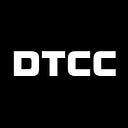Benefits of Digitalization and Programmability
By Jennifer Peve, DTCC Managing Director, Business Innovation

We are in the midst of a digital transformation journey that includes the evolution of assets supported and maintained on a blockchain, referred to as digital or tokenized assets. This wave of change will further transform the financial services industry through digitalization, which is the application of coded instructions into these digital assets that execute actions based on meeting pre-defined conditions. This programmability function can be beneficial when applied to assets and services in financial markets although it will take time and coordination.
DTCC — like others across the industry — has been examining the potential use of distributed ledger technology (DLT), asset digitalization and other emerging technologies for some time. Digitalization has the potential to strengthen a range of post-trade processes, including for example lifecycle management in the private markets and settlement of securities in the public markets. DTCC’s recent initiatives — Project Ion and Project Whitney — are part of a broader effort to continue modernizing the critical infrastructure that underpins the U.S. capital markets infrastructure.
Project Ion is exploring whether digitalizing assets on DLT can accelerate settlement for the U.S. equities market and also reduce costs and risks for market participants. To prove out its hypothesis, DTCC is developing a prototype with enhanced functionality on a permissioned DLT-based platform. The feedback and lessons learned from this experiment will inform DTCC’s assessment of a potential new accelerated settlement service option.
Project Whitney — which was developed into a functional prototype — explores the potential for a digital infrastructure to support private market securities that are exempt from registration with the U.S. Securities and Exchange Commission (SEC). While public markets are highly efficient, the private market remains highly manual with few digital solutions available. DTCC is analyzing if the tokenization of traditional assets — as one component of this broader digital infrastructure solution — can be leveraged to create an operationally efficient and secure approach to private market offerings in the U.S. Working with the industry, DTCC is currently experimenting with different integration options for the prototype, including integration via Application Programming Interfaces (API), public blockchains and private ledgers.
“DTCC — like others across the industry — has been examining the potential use of distributed ledger technology (DLT), asset digitalization and other emerging technologies for some time.”
The concept of programmability is also an important component in discussions regarding Central Bank-issued digital currency (CBDC). While CBDCs will ultimately be designed and potentially progressed based upon policy implications and other Central Bank-specific factors, programmability within CBDCs could assist in reshaping payment networks. A programmable wholesale CBDC utilizing DLT, for example, could enable instantaneous on-chain settlement and faster cross border payments. While there are opportunities for greater efficiencies within U.S. payment systems, initiatives are currently underway and CBDCs are one potential future approach.
Ensuring the appropriate structures, standards and governance processes are in place to support asset digitalization and programmability are pre-requisites to successful implementation and adoption. While it will take time, these efforts have the potential to effectuate significant change in financial markets globally.
